
The robustness and longevity of peonies
Peonies have nothing in common with most plants today: they flower for a short time, their foliage has no particular appeal (except at the very beginning of spring), and they end up becoming bulky. However, they are as popular as they were fifty or a hundred years ago, and there are few gardens that do not have at least one.
Their secret? Exceptional longevity and unfailing robustness: to “fail” a peony, you have to put some bad will into it!
Once installed, these hardy perennial plants can live a very long time and often outlive the gardener who planted them. Their bulky stump produces few roots, but they can go deep. This is the reason why a moved or divided peony takes time to take root again and flower well (two to three years are necessary).
Growing and Care Tips for Peonies
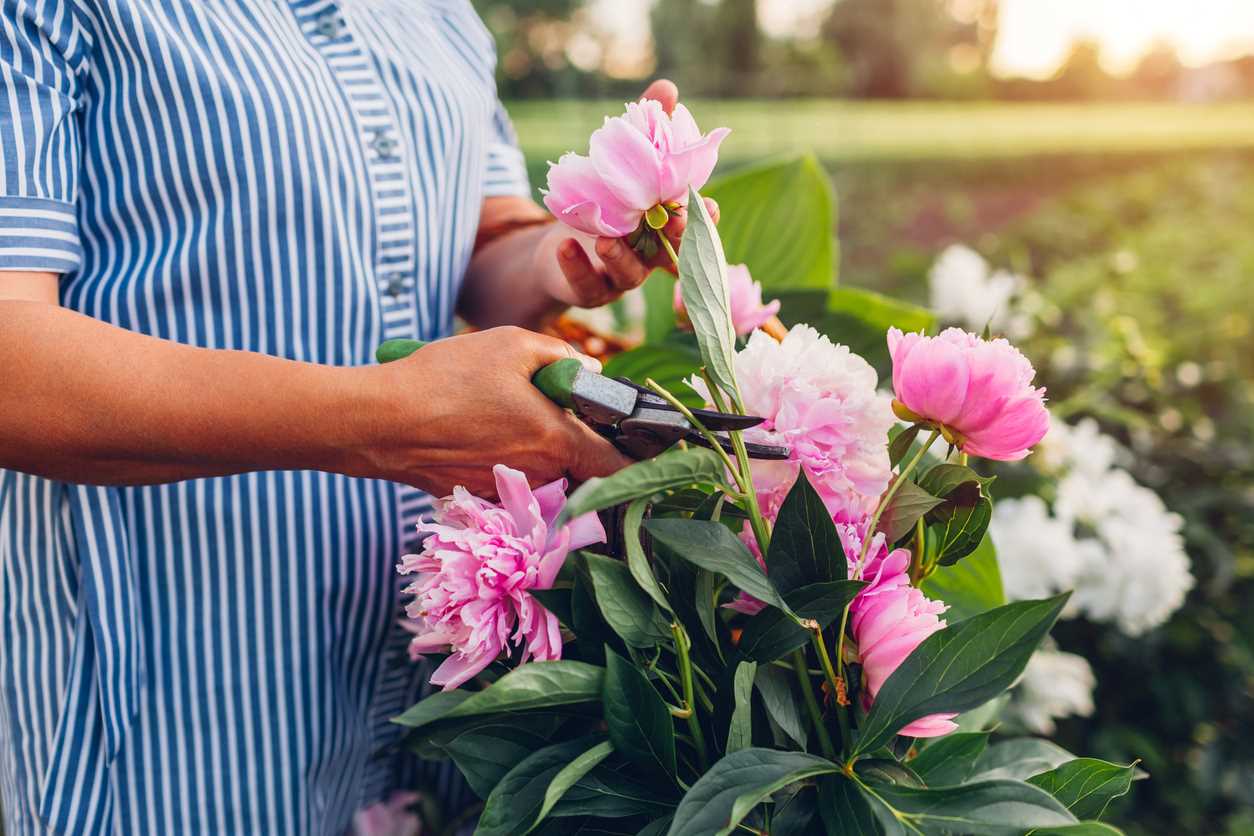

Peonies are part of the Ranunculaceae family. They are therefore cousins of field buttercups and florists renowned for their multiple varieties with very colorful double flowers.
They are also close relatives of hellebores and clematis, in which we find the same variants: simple semi-double flowers (“petaloid” stamens like Japanese peonies) and double.
They love :
- Deep, draining soil (even dry in summer).
- A clear situation ;
- Stay in place for at least 10 years before being divided.
They hate :
- Stagnant humidity.
- The proximity of trees.
- Being moved too often.
- Peonies don’t really like the company of shrubsunless they are not very greedy, like this berberis unless you plant them on the sunniest side.
- The proximity of a shrub creates shade which forces the peony stems to lie down. to move towards the light, and this weakens them, especially those of varieties with double flowers. Furthermore, filtered light reduces the quantity of flowers: here, there are much fewer than if the plant were grown in full sun.
A good solution is to completely shave the berberis each winter so that it can be completely renewed during the following summer. In spring, its young shoots, very red, will be in perfect harmony with those of the peony.
Choose your peonies now!
Until now, peonies were only sold as bare roots. They had to be ordered and planted before the start of spring; the choice of varieties could only be made from a catalogue.
Today, they are found in container, ready to flower or in flower, which allows you to appreciate their color and (possible) scent. The other advantage is that you gain a year for the recovery and development of the plants, the major rooting period taking place at or just after flowering, and before the summer rest.
So start making your choice and wait for the next plant festival or the next arrival in your garden center to acquire your peonies.
Hundreds of varieties of peonies, traditional or modern
We distinguish four types of peonies, but schematically, we can divide them into two groups: the “traditional” oneswith full, opulent, fragrant flowers, and the “most modern”with simple corollas, often more brightly colored.
The first correspond to the image we have of the peony: heavy, pastel-colored flowers, magnificent in a vase. But in the garden, the stems do not support the weight of the flowers, especially when several corollas bloom at the same time (this is why they must be staked). Furthermore, they flower in late May or early June, at a time when storms are frequent. Their only quality is the durable nature of their strains.
In summary, let’s admit that these old peonies are poor garden plants.
Real improvements
Single-flowered peonies show off more efficient and their performance in the garden is better, especially in the event of a rainy spring. Many gardeners find their flowers too short-lived. This is true for botanical peonies, not for Japanese and hydrides, whose flowers remain in bloom for at least a week and are renewed two or three weeks, sometimes even more.
Furthermore, breeders have improved the strength of the stems, which are capable of keeping the flowers upright. Thanks to their deep roots, they do not require care or watering in summer. They love limestone soils and can live for decades without being divided. Most also have beautiful foliage, remarkable as soon as it emerges from the ground in early March.
Today’s peonies have therefore earned their stripes as “good garden plants.
In traditional gardens, peonies are found along the path and along the vegetable garden, which makes picking the flowers easier. Today, we prefer to mix them with other plants. All perennials that flower at the same time are suitable: irises, valerians, lupins, julienne des Dames, etc.
However, the most beautiful effects are obtained with flowers smaller than peonies. These associations reinforce the natural appearance of species and varieties with simple flowers and, by contrast, enhance the large double flowers. According to the same principle, avoid marrying them with oriental poppies, which resemble them. Think of surround them with ground cover plants, such as perennial geraniums (G. sanguineum, G. macrorrhizum, G. x endressiz). Thus, the large flowers will not be in direct contact with the earth if the rain weighs them down.
Peonies work wonders in a flower meadow, because they can easily withstand competition from grass, thanks to their deep roots. So don’t hesitate to plant them in a wild garden or near grasses which will lighten their bushy appearance. In this case, avoid varieties with large double flowers or unnatural colors.
What is less known is the beauty of the foliage before the peonies bloom. The young shoots of certain botanicals are spectacular (R mlokosewitchii, P. tenuifolia.. Highlight them in surrounding them with small early bulbs : crocuses, chionodoxas, scillas… in flower at the moment when the very red young shoots emerge from the ground.
Finally, even if you find the foliage sad in summer, after flowering, don’t cut it : you would weaken the stumps by depriving them of the energy stored by the leaves. Better to use it as a support for a herbaceous clematis (‘Arabella’, ‘Alionushka’) or to grow sweet peas. Plus, some varieties even take on stunning red colors in fall!
Large species of peonies
1. The Japanese
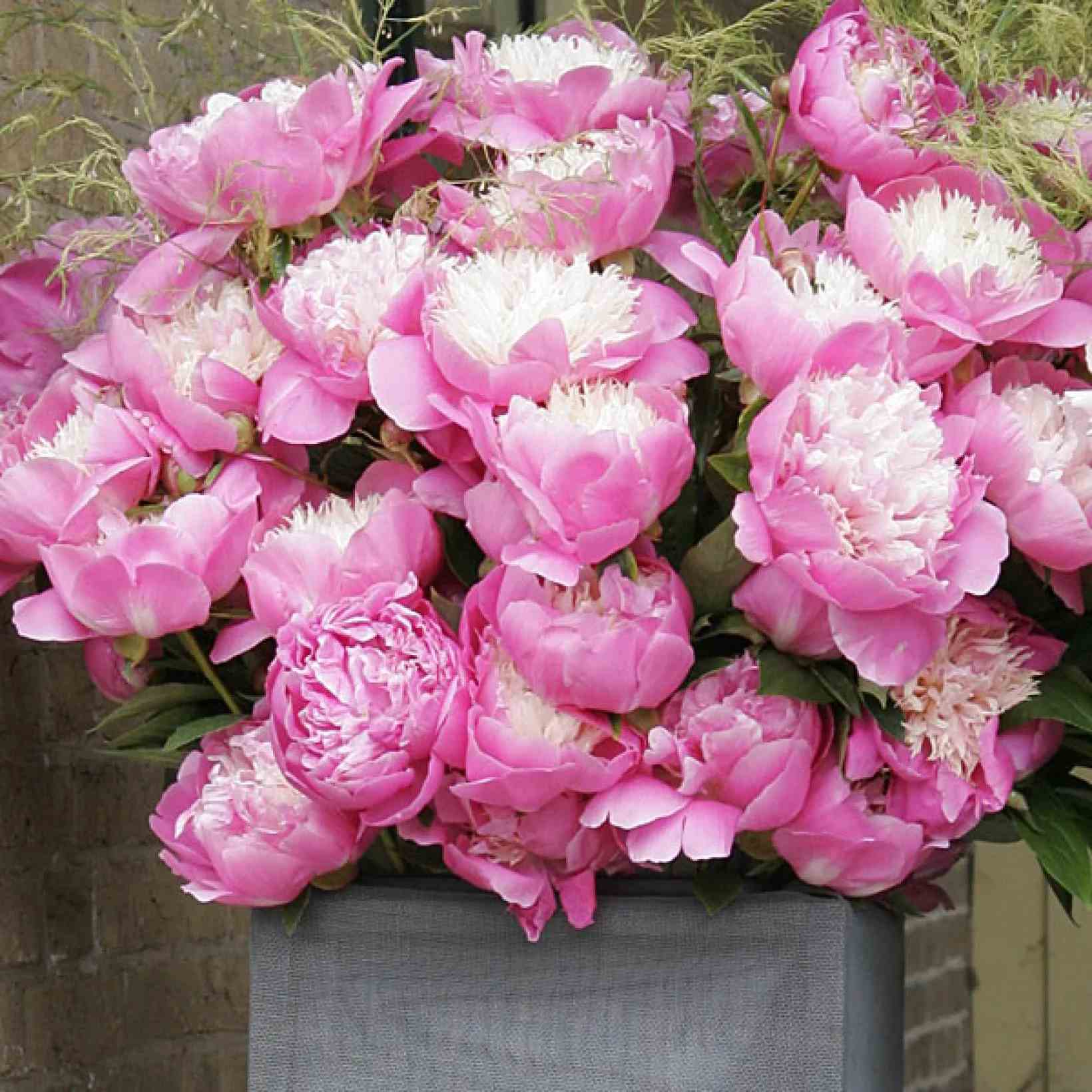

Most consist of a simple corolla and a large heart of yellow stamens or “petaloids”, that is to say stamens transformed into elongated, cream or whitish petals (‘Bowl of Beauty’) . Recent selections (‘Neon’, ‘Gay Paree’…), with very strong, almost fluorescent colors, are planted on rigid stems and resist well to storms which often occur at the time of their flowering.
‘Gay Paree’ makes a perfect link between Berberis x ottawensis ‘Auricoma’ (whose purple leaves harmonize with the purplish pink of its corollas), and white columbines, which recall the heart of creamy white petaloid stamens.
2. Chinese women
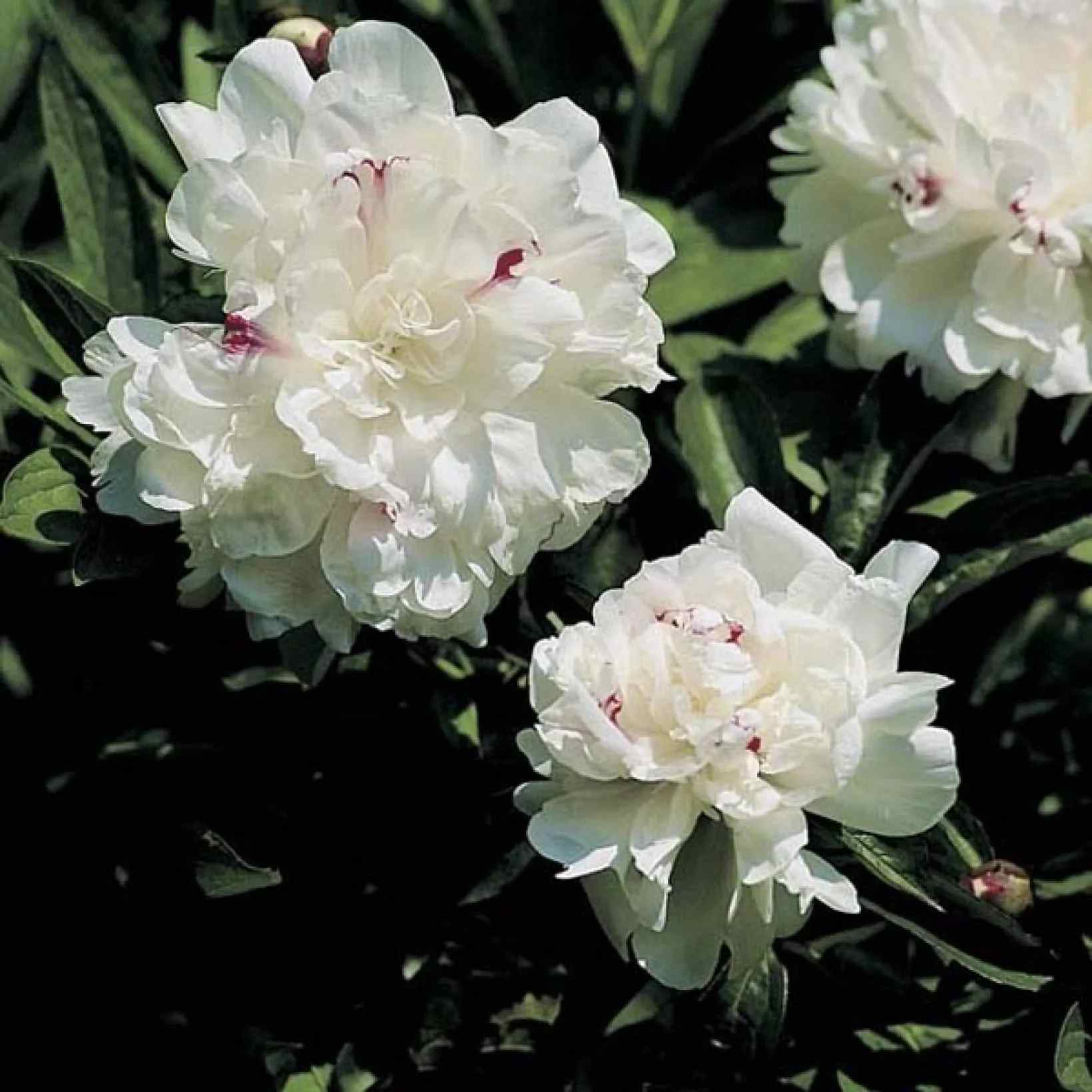

We therefore nickname “double-flowered” peonies, such as ‘Festiva Maxima’ (white) and ‘Sarah Bernhardt’ (pink), old varieties. They bloom end of May or beginning of June, each flower lasting three to five days… if it doesn’t rain!
The stems bear a main flower and one or two others which succeed it, provided that the first faded flower is removed as quickly as possible.
3. Botanicals
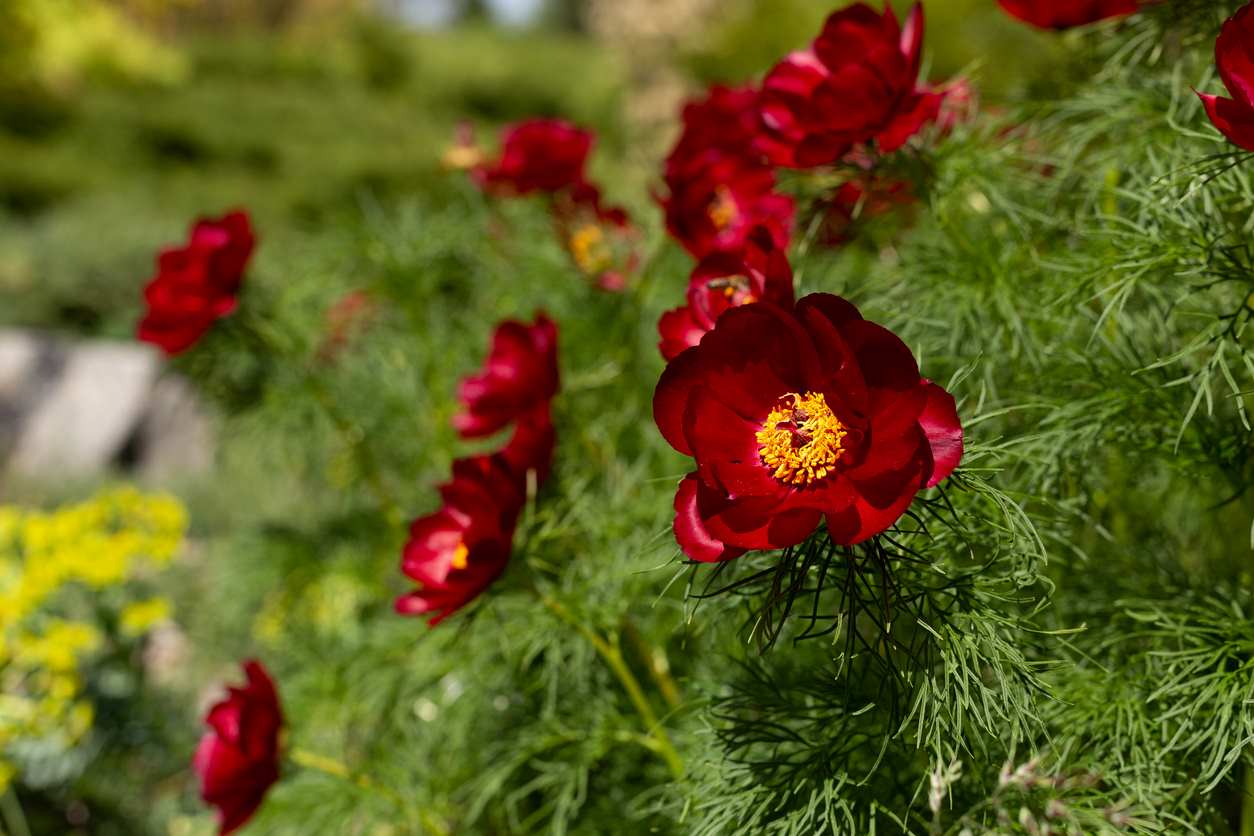

Little cultivated, they have a certain charm, presence and natural allure that hybrids lack. Paeonia tenuifolia, one of the most common, is sought after for its cut foliage and red flowers. Another rare gem, P. mlokosewitschii, is appreciated for the beauty of its young foliage and its simple, soft yellow flowers.
4. Hybrids
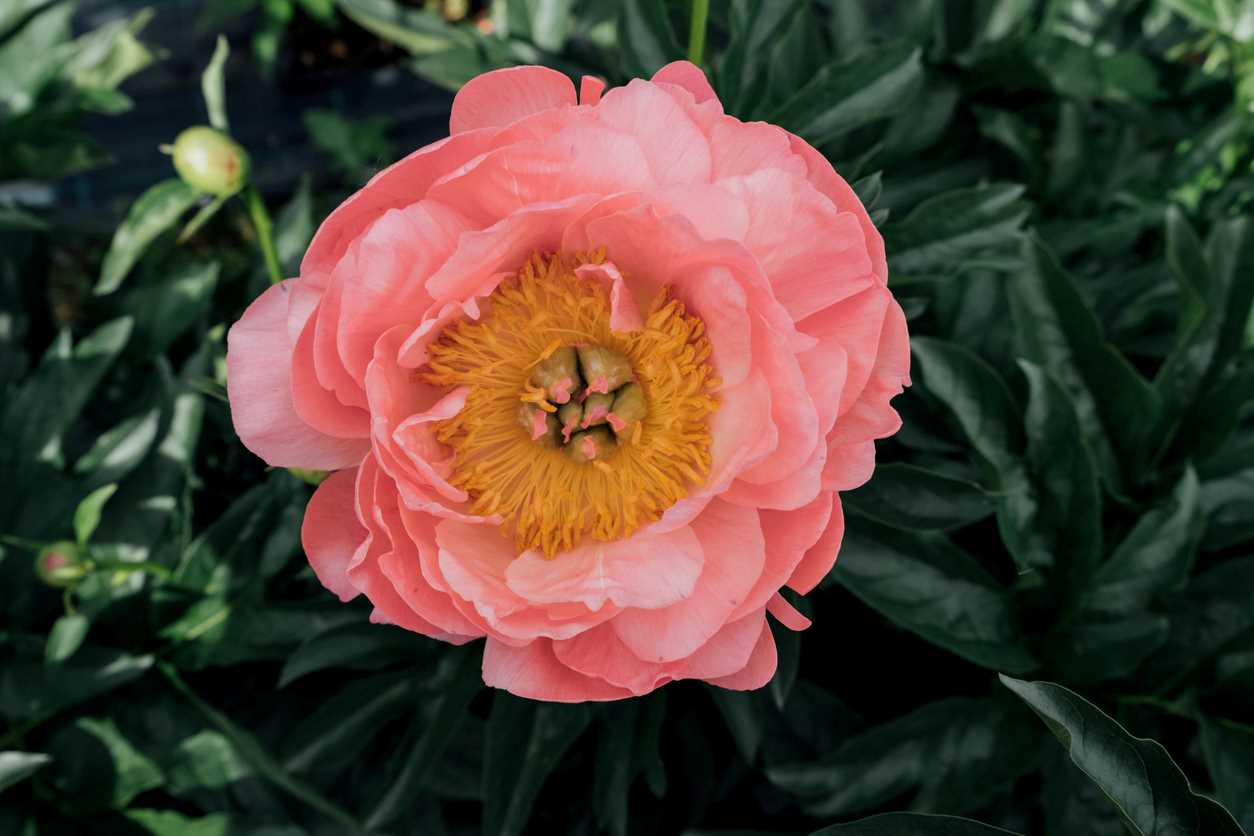

From a cdirect crossing between two species, these peonies are vigorous. They flower more than botanicals, earlier than traditional ones (generally, early to mid-May). Many are simple, like ‘Avant Garde’ (pink white) obtained 100 years ago, or ‘Coral Charm’, one of the most beautiful new products, with orange-pink flowers.

